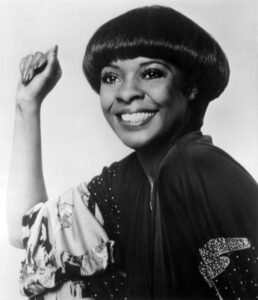The Sound of Liberation
For many, disco was more than just a genre. It was a sonic revolution. The moment the beat dropped and the bassline rolled in, something inside you shifted. You were no longer just a listener – you were a participant in liberation.
In the early 1970s, the streets of New York buzzed with protest and possibility. While politicians debated equality, disco clubs enacted it. The dancefloor became the only place where a Black drag queen, a white construction worker, a Latina poet, and a queer teen could coexist in pure celebration. It was not just a temporary escape—it was a radical reimagining of how the world could sound and feel.
“Disco didn’t ask who you were. It told you who you could be.”
– Club regular, Chicago, 1978
Disco’s musical DNA is deeply rooted in resistance. It emerged from soul and funk, genres already steeped in African-American pride and spiritual longing. Add to that Latin percussion, gospel harmonies, and the emerging power of electronic synthesis, and you had a cocktail of sound that was impossible to ignore. The pulse was addictive, but it was also political.
Songs like “To Be Real” by Cheryl Lynn or “Don’t Leave Me This Way” by Thelma Houston carried coded messages. On the surface, they were love songs. Beneath, they were battle cries for authenticity, for belonging. To “be real” wasn’t just romantic, it was survival.
Disco was one of the first genres where queer artists didn’t have to hide. Sylvester, a flamboyant falsetto powerhouse, sang openly about love and desire. “You Make Me Feel (Mighty Real)” wasn’t just a hit, it was an anthem. And when he performed it in packed clubs or on national television, every high note carried the weight of representation.

Telma Houston, 1977 / Source: commons.wikimedia.org (Tamla Records – Motown)
Voices of color dominated the disco charts. Gloria Gaynor, Donna Summer, The Trammps, First Choice, and countless others weren’t just entertaining, they were rewriting pop culture. Their voices declared that stories from the margins could be global, sexy, profitable, and unforgettable.
The power of disco also lay in repetition. The extended 12” mix allowed dancers to lose themselves in the rhythm for ten, fifteen, even twenty minutes. Liberation came in waves. With every loop, a new part of yourself was shed – shame, fear, anger – and what was left was something freer.
Producers like Tom Moulton and Larry Levan understood this. They didn’t just record music, they engineered euphoria. Sound systems became more than technology; they were tools of emotional elevation. When a song like “Love Is the Message” by MFSB played at full volume in a packed club, it felt like a sermon.
And the clubs themselves? Sanctuaries. The Paradise Garage, The Loft, The Warehouse – they weren’t just nightlife venues. They were community centers, therapy sessions, temples. What gospel was to the church, disco was to the dancefloor.
Disco’s sound liberated bodies, but also minds. It told listeners that joy was not a distraction from struggle – it was a form of resistance. That dancing could be radical. That being seen and heard could be revolutionary.
To this day, you can hear echoes of that freedom in every remix, every reimagining, every throwback night. Disco didn’t just teach us how to move. It taught us how to live out loud.
CONTINUE EXPLORING THE SOCIAL AND POLITICAL DIMENSIONS OF DISCO:
• Roots of Resistance
• From Stonewall to Studio 54
• Feminist Voices in Spotlight
• Dancefloor as Protest
• Censorship Backlash
SOUND REFLECTIONS:
A few key tracks that echo the themes of freedom, empowerment, and social liberation:
-
“Supernature” – Cerrone (1977)
A sci-fi disco epic that critiques environmental abuse and scientific overreach – framed as a cautionary tale wrapped in synths and strings. -
“I Am What I Am” – Village People (1978)
More than a camp anthem – an unapologetic declaration of identity, individuality, and queer pride at a time when visibility was resistance. -
“Born To Be Alive” – Patrick Hernandez (1978)
A pulsating tribute to existence itself, reminding dancers everywhere that joy, energy, and life are worth celebrating – on and off the floor. -
“Controversy” – Prince (1981)
Blurring gender, religion, and politics, Prince turns his own identity into a liberating manifesto for anyone who dares to be different. -
“Give Me Tonight” – Shannon (1984)
Freestyle energy meets romantic autonomy – her voice commanding space and time on the dancefloor in a declaration of desire on her terms.
These tracks reflect how disco and its descendants became a language of liberation—bold, boundary-breaking, and unafraid to demand space for every identity.
Full Spotify playlist: TOP 500 ESSENTIAL DISCO CLASSICS (1972-1979)
